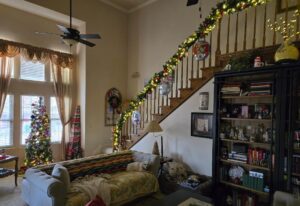The famed Frank House—the quirky and unique home of Frankoma Pottery founder John Frank and his family—is undergoing extensive renovations and restorations after being purchased by renowned architect Dan Naegele and his partner Jennifer Russell.
Naegele is an architect and associate professor of architecture at Iowa State University, as well as a graduate of Yale and of the Architectural Association in London. He appeared this week at the local Rotary Club meeting to talk about why he decided to purchase the home.
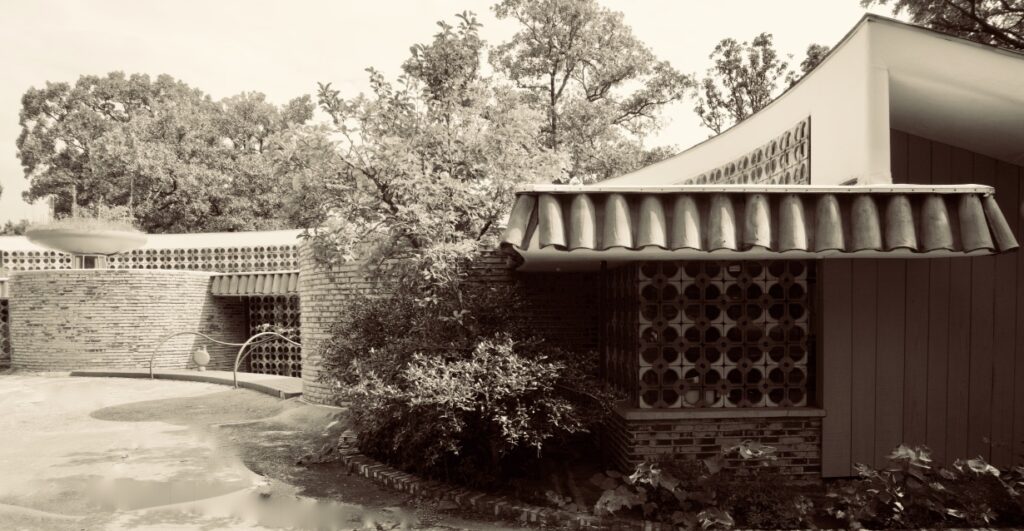
“[The Frank House] is kind of magical,” he said. “The house is really famous because of the green brick, and because it’s filled with Frankoma—it’s clad in Frankoma.”
The home, located on Luker Lane, has been a consistent draw for fans of all types for ages; whether a collector of the patriarch’s pottery works or an architectural fascination with the work of Bruce Goff. It’s even been known to draw folks traveling Route 66, though the home itself doesn’t sit directly on The Mother Road.
Bruce Goff, “a renegade architect,” was born in 1904, never educated in college, and was apprenticed at 12 years old to an architect in Tulsa. He worked there until the Great Depression hit and then relocated to Chicago and eventually joined the Navy. After retiring from the Navy, Goff began teaching and started a famous school of architecture in Norman, Oklahoma. “It only lasted about five or six years, but it attracted people from around the world,” Naegele said.
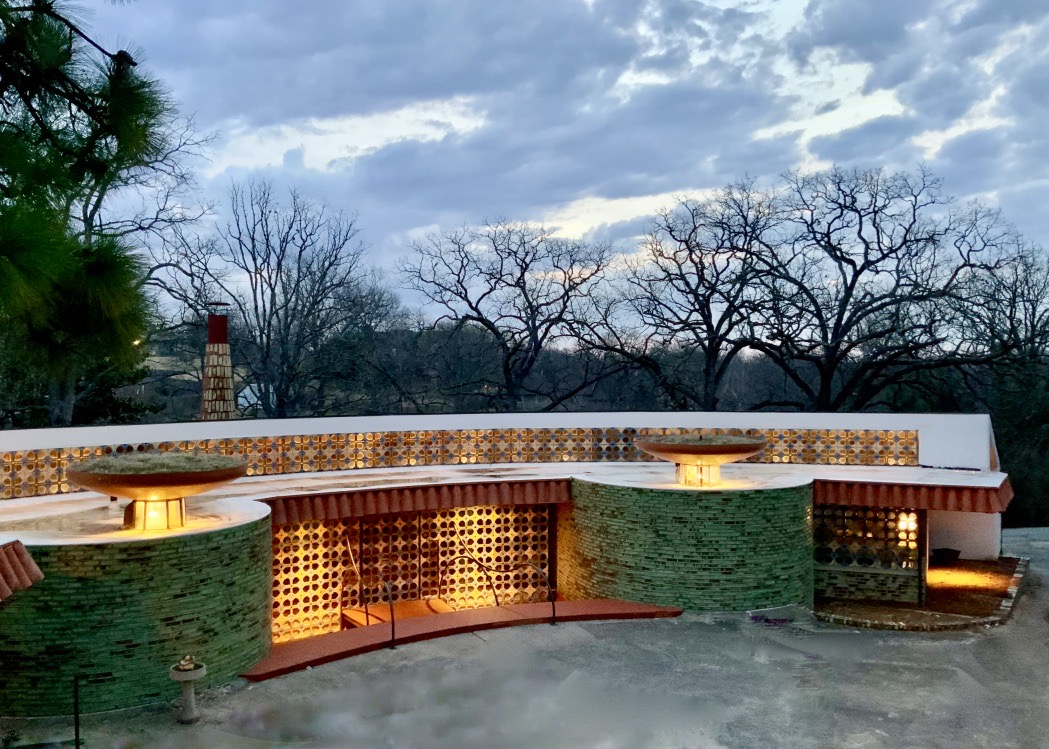
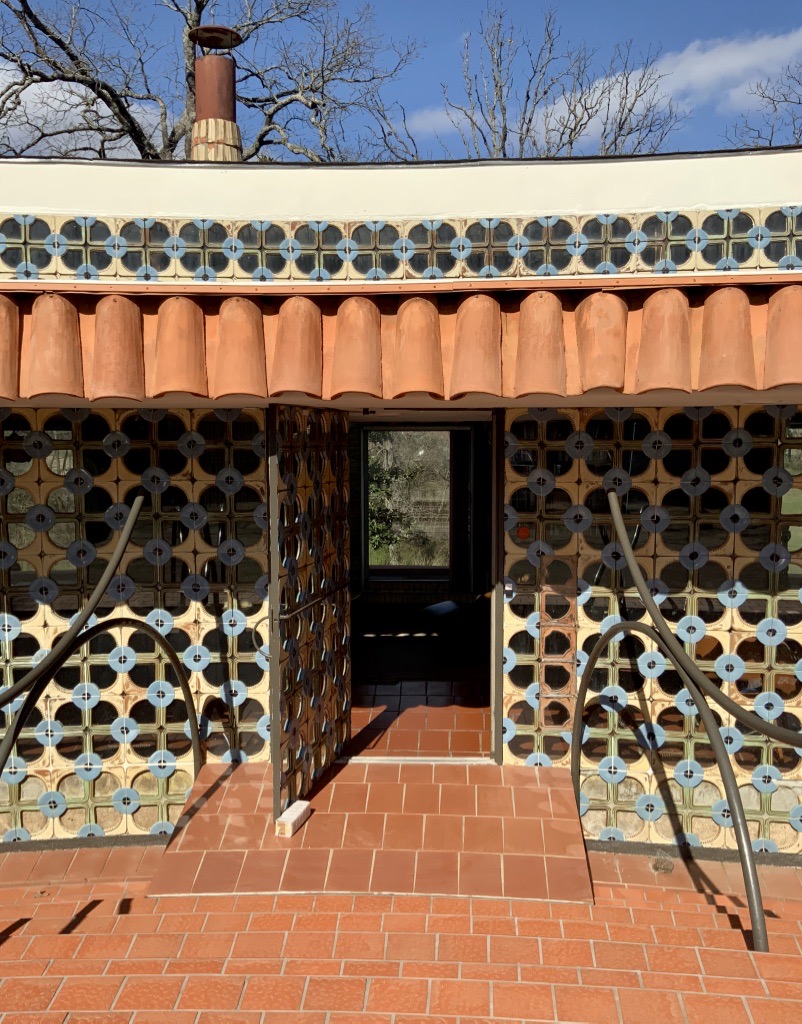

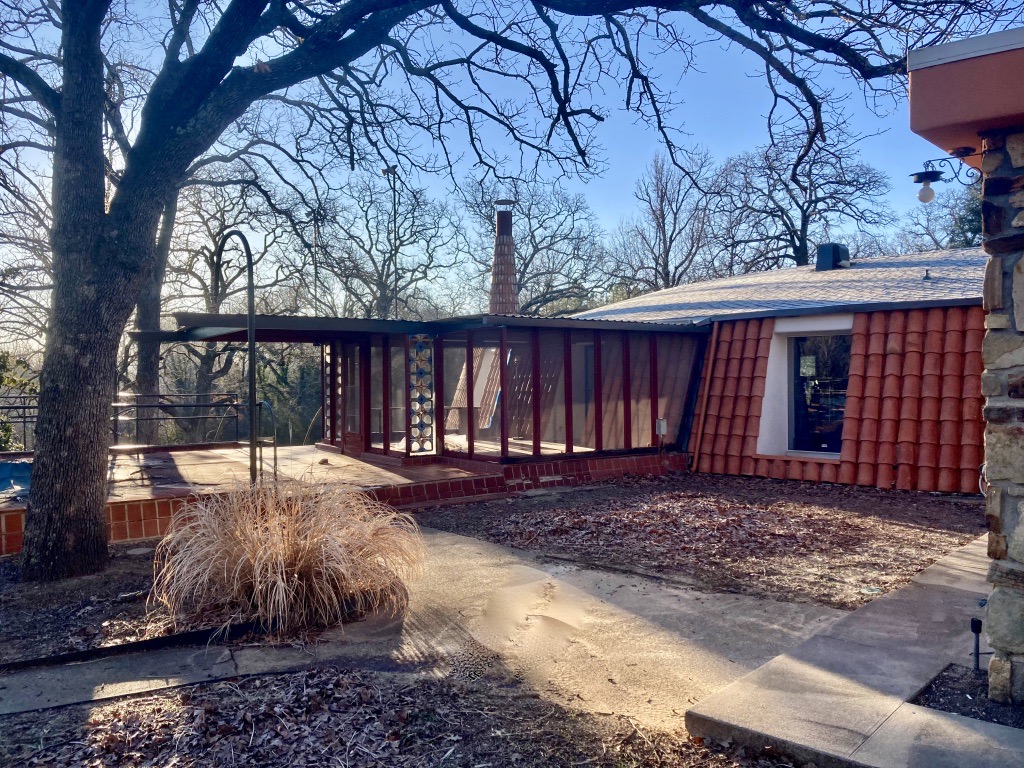
Goff was at “the height of his fame” when he was commissioned by John Frank—who was also teaching in Norman at the time—to design the house in 1955. By the time it was completed in 1956, it was drawing attention from all around the world, both for its unique design and for the fact that a large portion of the work was done by the Franks themselves.
More than sixty years later, the home still stands as a staunch example of the architect’s flamboyant style, and with John Frank’s heirs deceased, it only makes sense that the home go to someone who would be able to honor it.
That’s not to say that there haven’t been challenges, particularly when it comes to water damage. “Goff was famous for not using gutters,” Naegele said. “So the first thing I did was put gutters on it, and try to do it delicately so that it doesn’t screw up everything.”
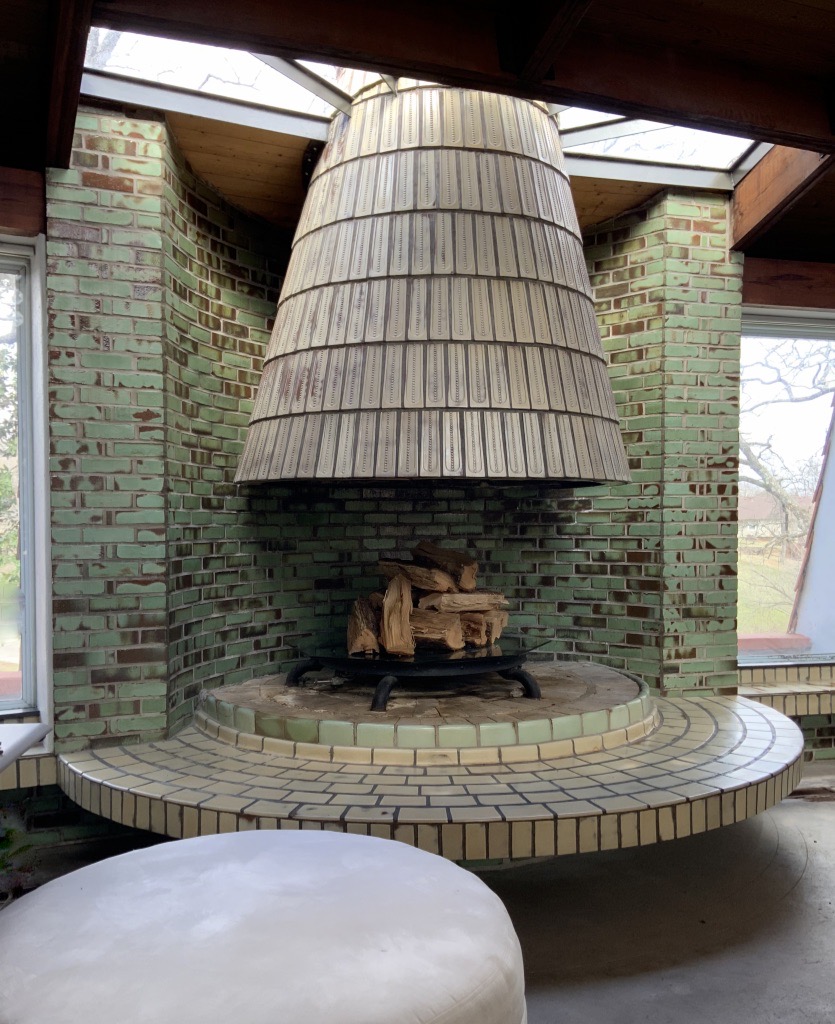
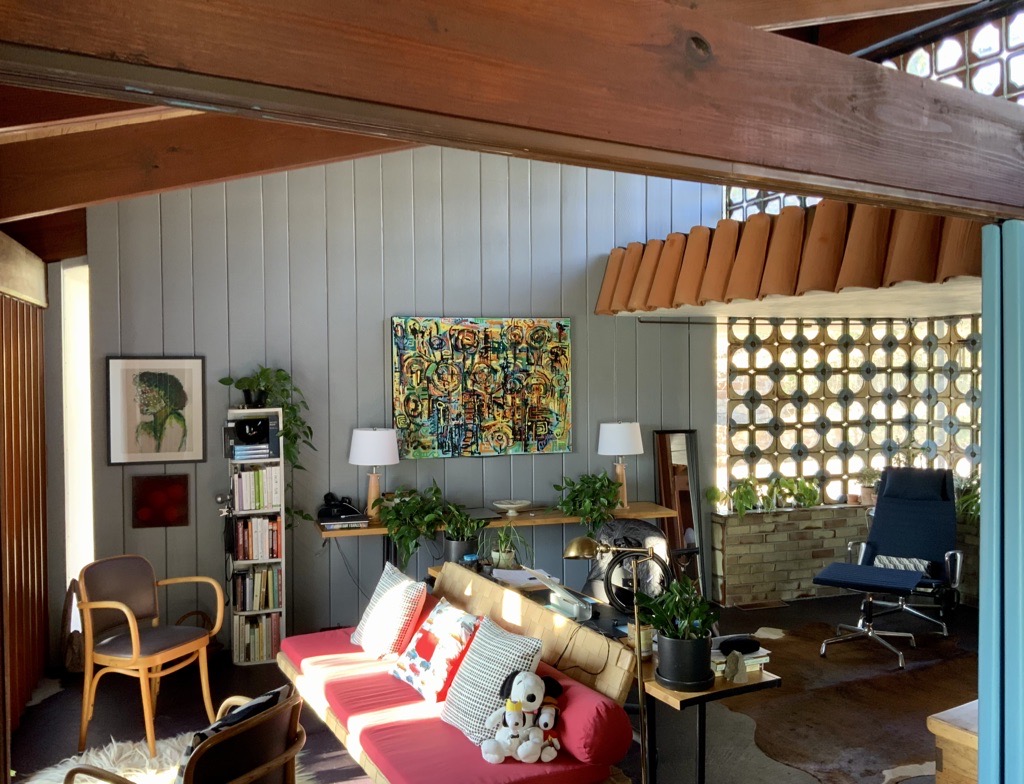
The walls of the home were meant to be moved so that the Franks could open up a room and entertain large crowds, but Naegele said that came with its own set of problems. “[The house] doesn’t have any drywall in it,” he said. “Some plaster. The floor is tile. The bathrooms are pink and gold and green. There’s lots and lots of wood. It’s just filled with texture.”
Sapulpa Chamber Director Janet Birnie asked about the shag carpet in the living room. Naegele said that too, had succumbed to moisture. “It looked like cauliflower,” he said. “Mold and mildew everywhere.” Naegele said that his partner Jennifer Russell refused to help “until I got a hazmat suit and took out all of that stuff.”
Naegele says that they’re receptive to the visitors they get, even to this day. “Lots of people come over on Sunday,” he says. He also maintains that he’s glad to have the house because of what it means to the world of architecture. “The house is really of some importance to architecture—it’s not a minor, just interesting little piece, it’s very important—so we’re happy that we have it.”






